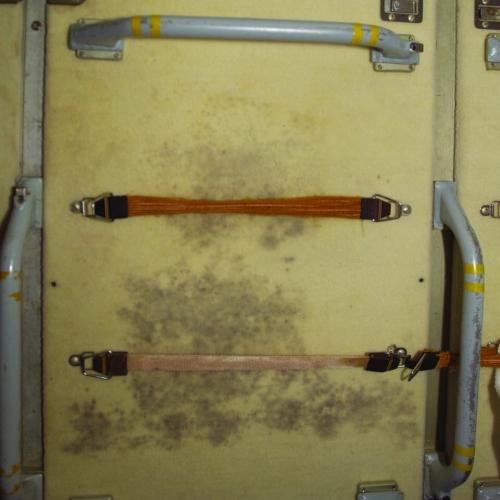Author: Robert Zimmerman
Another grand galaxy imaged by Hubble
Cool image time! The photo to the right, reduced to post here, was released today and is one in what has become a steady string of recent and quite spectacular galaxy images produced by scientists using the Hubble Space Telescope. From the caption:
This image from NASA’s Hubble Space Telescope features the Grand Design Spiral, NGC 3631, located some 53 million light-years away in the direction of the constellation Ursa Major. The “arms” of grand design spirals appear to wind around and into the galaxy’s nucleus.
Close inspection of NGC 3631’s grand spiral arms reveals dark dust lanes and bright star-forming regions along the inner part of the spiral arms. Star formation in spirals is similar to a traffic jam on the interstate. Like cars on the highway, slower moving matter in the spiral’s disk creates a bottleneck, concentrating star-forming gas and dust along the inner part of their spiral arms. This traffic jam of matter can get so dense that it gravitationally collapses, creating new stars (here seen in bright blue-white).
This spiral follows the classic shape of these whirlpool galaxies. The Milky Way, though also a spiral, is now thought to be a barred spiral, whereby the galaxy’s whirlpool shape is distorted by a large straight bar of stars crossing its center.
Scientists also released today a second photo from Hubble of a different spiral galaxy, which you can check out here.
Cool image time! The photo to the right, reduced to post here, was released today and is one in what has become a steady string of recent and quite spectacular galaxy images produced by scientists using the Hubble Space Telescope. From the caption:
This image from NASA’s Hubble Space Telescope features the Grand Design Spiral, NGC 3631, located some 53 million light-years away in the direction of the constellation Ursa Major. The “arms” of grand design spirals appear to wind around and into the galaxy’s nucleus.
Close inspection of NGC 3631’s grand spiral arms reveals dark dust lanes and bright star-forming regions along the inner part of the spiral arms. Star formation in spirals is similar to a traffic jam on the interstate. Like cars on the highway, slower moving matter in the spiral’s disk creates a bottleneck, concentrating star-forming gas and dust along the inner part of their spiral arms. This traffic jam of matter can get so dense that it gravitationally collapses, creating new stars (here seen in bright blue-white).
This spiral follows the classic shape of these whirlpool galaxies. The Milky Way, though also a spiral, is now thought to be a barred spiral, whereby the galaxy’s whirlpool shape is distorted by a large straight bar of stars crossing its center.
Scientists also released today a second photo from Hubble of a different spiral galaxy, which you can check out here.
Today’s blacklisted American: Churches vandalized by leftists for their beliefs

What the left really wants: To burn Christians at the stake.
Genocide is coming to America: Four churches in Olympia, Washington, were vandalized during the May 21st weekend by Puget Sound Anarchists, a pro-abortion group that makes believe it is anti-authoritarian but is willing to commit violence against anyone who dares to express an opinion it does not like.
From an anonymous post on May 22nd on their own website:
A Mormon church, Calvary church, Harbor Church, and St. Michael’s Catholic church all received facelifts in the early hours of Sunday morning. We dumped red paint over the entryways and left messages of “If abortions aren’t safe then neither are you,” “Abort the church,” and “God loves abortion.”
…While a little graffiti may be a small gesture in the war against patriarchal religious control, we wish to highlight that it’s easy and fun to attack. Our enemies are vulnerable and easy to find. [emphasis mine]
In another post from July 2021, this group proudly takes credit for destroying and damaging a garage full of police cars, adding
Be bold! Sabotage is fun!

What the left really wants: To burn Christians at the stake.
Genocide is coming to America: Four churches in Olympia, Washington, were vandalized during the May 21st weekend by Puget Sound Anarchists, a pro-abortion group that makes believe it is anti-authoritarian but is willing to commit violence against anyone who dares to express an opinion it does not like.
From an anonymous post on May 22nd on their own website:
A Mormon church, Calvary church, Harbor Church, and St. Michael’s Catholic church all received facelifts in the early hours of Sunday morning. We dumped red paint over the entryways and left messages of “If abortions aren’t safe then neither are you,” “Abort the church,” and “God loves abortion.”
…While a little graffiti may be a small gesture in the war against patriarchal religious control, we wish to highlight that it’s easy and fun to attack. Our enemies are vulnerable and easy to find. [emphasis mine]
In another post from July 2021, this group proudly takes credit for destroying and damaging a garage full of police cars, adding
Be bold! Sabotage is fun!
Astronomers: Shut down satellite companies so we don’t have to adapt!

Space-based astronomy, a concept apparently alien to astronomers
In an article published today in Nature, the astronomy community continued its crybaby complaining of the last three years about the interference posed to their ground-based telescopes by the tens of thousands of small satellites scheduled for launch in the next few years.
These quotes typify the apparent attitude of astronomers:
“This is an unsustainable trajectory,” says Meredith Rawls, an astronomer at the University of Washington in Seattle. “At the moment, our science is fine. But at what point will we miss a discovery?”
…“It’s really quite horrifying,” says Samantha Lawler, an astronomer at the University of Regina in Canada.
…The growing threat of satellite constellations adds to other degradations of the night sky such as light pollution, says Karlie Noon, a PhD candidate in astronomy and an Indigeneous research associate at Australian National University in Canberra. “In the same way that our lands were colonized, our skies are now being colonized,” she says. “And this isn’t just Indigenous people.” She points out that companies have launched satellites without necessarily consulting the scientific community. [emphasis mine]
Oh the horror. Scientists weren’t consulted! The nerve of these companies!
In response, astronomers have decided their only solution is to enlist the UN to shut down these satellite companies.
» Read more

Space-based astronomy, a concept apparently alien to astronomers
In an article published today in Nature, the astronomy community continued its crybaby complaining of the last three years about the interference posed to their ground-based telescopes by the tens of thousands of small satellites scheduled for launch in the next few years.
These quotes typify the apparent attitude of astronomers:
“This is an unsustainable trajectory,” says Meredith Rawls, an astronomer at the University of Washington in Seattle. “At the moment, our science is fine. But at what point will we miss a discovery?”
…“It’s really quite horrifying,” says Samantha Lawler, an astronomer at the University of Regina in Canada.
…The growing threat of satellite constellations adds to other degradations of the night sky such as light pollution, says Karlie Noon, a PhD candidate in astronomy and an Indigeneous research associate at Australian National University in Canberra. “In the same way that our lands were colonized, our skies are now being colonized,” she says. “And this isn’t just Indigenous people.” She points out that companies have launched satellites without necessarily consulting the scientific community. [emphasis mine]
Oh the horror. Scientists weren’t consulted! The nerve of these companies!
In response, astronomers have decided their only solution is to enlist the UN to shut down these satellite companies.
» Read more
Women Of Country – Coal Miner’s Daughter
An evening pause: From a 2011 concert, sung to pay tribute to Loretta Lynn. From left to right, Jennifer Nettles, Miranda Lambert, Reba McEntire, Martina McBride, Carrie Underwood, and Wynonna and Naomi Judd.
Hat tip Diane Zimmerman.
Starliner successfully lands in New Mexico

Capitalism in space: Boeing today successfully completed the safe landing of Starliner from an unmanned demo mission to ISS, making it the only American capsule to touchdown on the ground using parachutes. This was the second Starliner to do so, though the first demo mission was cut short just after reaching orbit.
The screen capture to the right comes from the live stream, about two minutes before touchdown. You can see the airbags deployed under the capsule, which inflated just after the heat shield was jettisoned.
The capsule landed only 0.3 miles from its target, an excellent result. Crews are now heading to the capsule at White Sands to carefully check it out, to make sure no hazardous fuel leaks pose a threat to those ground crews.
I must complement Boeing (and NASA) on providing very professional coverage. It has often been painful in recent years to watch any NASA broadcast because of the breathless propaganda the agency has somehow thought it needed to do. In this case however the announcers and the broadcast were calm, thoughtful, and very informative, focused not on emotion but on reporting what was actually happening. Kudos to Boeing!
» Read more

Capitalism in space: Boeing today successfully completed the safe landing of Starliner from an unmanned demo mission to ISS, making it the only American capsule to touchdown on the ground using parachutes. This was the second Starliner to do so, though the first demo mission was cut short just after reaching orbit.
The screen capture to the right comes from the live stream, about two minutes before touchdown. You can see the airbags deployed under the capsule, which inflated just after the heat shield was jettisoned.
The capsule landed only 0.3 miles from its target, an excellent result. Crews are now heading to the capsule at White Sands to carefully check it out, to make sure no hazardous fuel leaks pose a threat to those ground crews.
I must complement Boeing (and NASA) on providing very professional coverage. It has often been painful in recent years to watch any NASA broadcast because of the breathless propaganda the agency has somehow thought it needed to do. In this case however the announcers and the broadcast were calm, thoughtful, and very informative, focused not on emotion but on reporting what was actually happening. Kudos to Boeing!
» Read more
SpaceX launches 59 smallsats and tugs into orbit
Capitalism in space: SpaceX today successfully launched 59 smallsats and orbital tugs using its Falcon 9 rocket.
The first stage successfully completed its eighth flight, landing at Cape Canaveral. As I write this the upper stage is in the several hour-plus process of deploying the payloads.
The leaders in the 2022 launch race:
22 SpaceX
16 China
7 Russia
3 Rocket Lab
3 ULA
American private enterprise now leads China 31 to 16 in the national rankings, and the entire rest of the world combined 31 to 26.
Capitalism in space: SpaceX today successfully launched 59 smallsats and orbital tugs using its Falcon 9 rocket.
The first stage successfully completed its eighth flight, landing at Cape Canaveral. As I write this the upper stage is in the several hour-plus process of deploying the payloads.
The leaders in the 2022 launch race:
22 SpaceX
16 China
7 Russia
3 Rocket Lab
3 ULA
American private enterprise now leads China 31 to 16 in the national rankings, and the entire rest of the world combined 31 to 26.
Chinese expert calls for China to find ways to destroy Starlink constellation
A Chinese communications expert at its Beijing Institute of Tracking and Telecommunications has written a paper calling for China’s military to develop ways in which it can to destroy SpaceX’s Starlink constellation.
According to the South China Morning Post, lead author Ren Yuanzhen and colleagues advocated in Modern Defence Technology not only for China to develop anti-satellite capabilities, but also to have a surveillance system that could monitor and track all satellites in Starlink’s constellation.
“A combination of soft and hard kill methods should be adopted to make some Starlink satellites lose their functions and destroy the constellation’s operating system,” the Chinese boffins reportedly said, estimating that data transmission speeds of stealth fighter jets and US military drones could increase by a factor of 100 through a Musk machine connection.
I am sure China (as well as every other superpower — including the U.S. military) is already working on developing methods for either jamming or destroying Starlink. Doing either however is difficult because of the constellation’s nature: many small satellites all of which provide redundancy and are easily replaced. Even more depressing for these power-hungry government entities is the fact that Starlink is not the only constellation now in orbit, with many others soon to follow.
For example, consider the contracts that the NRO announced today with three different surveillance satellite companies, all of which have their own constellations. Getting rid of one is hard. All three is likely impossible.
A Chinese communications expert at its Beijing Institute of Tracking and Telecommunications has written a paper calling for China’s military to develop ways in which it can to destroy SpaceX’s Starlink constellation.
According to the South China Morning Post, lead author Ren Yuanzhen and colleagues advocated in Modern Defence Technology not only for China to develop anti-satellite capabilities, but also to have a surveillance system that could monitor and track all satellites in Starlink’s constellation.
“A combination of soft and hard kill methods should be adopted to make some Starlink satellites lose their functions and destroy the constellation’s operating system,” the Chinese boffins reportedly said, estimating that data transmission speeds of stealth fighter jets and US military drones could increase by a factor of 100 through a Musk machine connection.
I am sure China (as well as every other superpower — including the U.S. military) is already working on developing methods for either jamming or destroying Starlink. Doing either however is difficult because of the constellation’s nature: many small satellites all of which provide redundancy and are easily replaced. Even more depressing for these power-hungry government entities is the fact that Starlink is not the only constellation now in orbit, with many others soon to follow.
For example, consider the contracts that the NRO announced today with three different surveillance satellite companies, all of which have their own constellations. Getting rid of one is hard. All three is likely impossible.
Pushback: Navy loses in attempt to fire officer who refused COVID shots

Navy Lt Billy Moseley
Bring a gun to a knife fight: When faced with dismissal on a charge of misconduct because he refused to get a COVID shot, Navy Lieutenant Billy Moseley took his case before a Navy administrative separation board, and won a unanimous victory.
Anyone who has been in the Navy for at least six years is entitled to call for a separation board if threatened with dismissal. The board is made up of three Navy officers, and its decision is binding.
Younts [Moseley’s lawyer] argued at the board hearing that the mandate for the experimental COVID vaccines was not a lawful order since the military has not made fully FDA-approved versions of the vaccines available to military members.
The military defense attorney told Just the News that the attorneys for the Navy agreed with him that there are no FDA-approved vaccines available, only interchangeable vaccines. Younts added that if there are no FDA-approved vaccines available, then the president would have to authorize the experimental shots that are currently available, which hasn’t happened.
On Friday, the board voted 3-0 that Moseley’s failure to follow the COVID vaccine order did not count as misconduct and that he should remain in the Navy. Younts said that the board members weren’t convinced that the vaccine order was lawful.
According to the press release [pdf] from Younts,
» Read more

Navy Lt Billy Moseley
Bring a gun to a knife fight: When faced with dismissal on a charge of misconduct because he refused to get a COVID shot, Navy Lieutenant Billy Moseley took his case before a Navy administrative separation board, and won a unanimous victory.
Anyone who has been in the Navy for at least six years is entitled to call for a separation board if threatened with dismissal. The board is made up of three Navy officers, and its decision is binding.
Younts [Moseley’s lawyer] argued at the board hearing that the mandate for the experimental COVID vaccines was not a lawful order since the military has not made fully FDA-approved versions of the vaccines available to military members.
The military defense attorney told Just the News that the attorneys for the Navy agreed with him that there are no FDA-approved vaccines available, only interchangeable vaccines. Younts added that if there are no FDA-approved vaccines available, then the president would have to authorize the experimental shots that are currently available, which hasn’t happened.
On Friday, the board voted 3-0 that Moseley’s failure to follow the COVID vaccine order did not count as misconduct and that he should remain in the Navy. Younts said that the board members weren’t convinced that the vaccine order was lawful.
According to the press release [pdf] from Younts,
» Read more
Axiom signs deal with Italy to add an Italian module to its commercial space station
Capitalism in space: The commercial company Axiom today announced an agreement with the Italian government to begin design work on an Italian module that will eventually be added to its commercial space station, set to launch in ’24 as an addition to ISS that will eventually separate and fly independently.
The language of the press release is couched in a lot of vague statements, but this paragraph is the most revealing:
While the [agreement] is exploratory in nature, areas of cooperation outlined in the agreement include mutual definition of potential user requirements as well as technological solutions and operational concepts for an Italian module that could later be developed and integrated into the Axiom Space Station. The project could take the form of a public-private framework with the governance and business models developed over time. Other areas of cooperation include collaborative development and implementation of research supporting space exploration and technology, including advanced materials, pharmaceuticals, on-orbit manufacturing, space security, aerospace medicine, simulation and robotics, and other areas of mutual interest as determined by the two parties, as well as training and mission operations.
The deal will likely lead to Italy paying Axiom to build the module as well as provide that country support when it begins using that module for research and commercial development.
Nor is this Axiom’s only deal with other countries. Both Hungary and the UAE have signed agreements to fly in some manner with Axiom.
Capitalism in space: The commercial company Axiom today announced an agreement with the Italian government to begin design work on an Italian module that will eventually be added to its commercial space station, set to launch in ’24 as an addition to ISS that will eventually separate and fly independently.
The language of the press release is couched in a lot of vague statements, but this paragraph is the most revealing:
While the [agreement] is exploratory in nature, areas of cooperation outlined in the agreement include mutual definition of potential user requirements as well as technological solutions and operational concepts for an Italian module that could later be developed and integrated into the Axiom Space Station. The project could take the form of a public-private framework with the governance and business models developed over time. Other areas of cooperation include collaborative development and implementation of research supporting space exploration and technology, including advanced materials, pharmaceuticals, on-orbit manufacturing, space security, aerospace medicine, simulation and robotics, and other areas of mutual interest as determined by the two parties, as well as training and mission operations.
The deal will likely lead to Italy paying Axiom to build the module as well as provide that country support when it begins using that module for research and commercial development.
Nor is this Axiom’s only deal with other countries. Both Hungary and the UAE have signed agreements to fly in some manner with Axiom.
NRO awards major satellite contracts to BlackSky, Maxar, and Planet
Capitalism in space: The National Reconnaissance Office (NRO) today announced major satellite contracts worth billions of dollars with three different commercial satellite constellations, BlackSky, Maxar, and Planet, to provide it high resolution reconnaissance imagery over the next decade.
You can also read BlackSky’s press release of the contract award here.
The contracts are part of an NRO’s program, dubbed Electro-Optical Commercial Layer (EOCL), to shift from building its own reconnaissance satellites to buying the services from the private sector.
EOCL will support the mission needs of NRO’s half-million intelligence, defense, and federal civil agency users over the next decade. It will also help ensure long-term, continued support for the U.S. commercial remote sensing industry. EOCL is effective as of of May 22, 2022 with a five-year base and multiple one-year options with additional growth through 2032.
The five year contract with one year options through 2032 applies to all three satellite companies, and guarantees that all three will require extensive launch capabilities to keep their satellite constellations operating. The rising demand for rockets, both large and small, will thus continue.
Capitalism in space: The National Reconnaissance Office (NRO) today announced major satellite contracts worth billions of dollars with three different commercial satellite constellations, BlackSky, Maxar, and Planet, to provide it high resolution reconnaissance imagery over the next decade.
You can also read BlackSky’s press release of the contract award here.
The contracts are part of an NRO’s program, dubbed Electro-Optical Commercial Layer (EOCL), to shift from building its own reconnaissance satellites to buying the services from the private sector.
EOCL will support the mission needs of NRO’s half-million intelligence, defense, and federal civil agency users over the next decade. It will also help ensure long-term, continued support for the U.S. commercial remote sensing industry. EOCL is effective as of of May 22, 2022 with a five-year base and multiple one-year options with additional growth through 2032.
The five year contract with one year options through 2032 applies to all three satellite companies, and guarantees that all three will require extensive launch capabilities to keep their satellite constellations operating. The rising demand for rockets, both large and small, will thus continue.
Watch Starliner’s return to Earth
The astronauts on ISS closed the hatch yesterday on Boeing’s Starliner manned capsule in preparation for its return to Earth today, with a planned landing at White Sands, New Mexico, at 6:49 pm (Eastern).
I have embedded NASA’s live stream below. The undocking at 2:36 pm (Eastern), with the live stream beginning at 2:30 pm (Eastern). After the capsule separates and ends joint operations with ISS the live stream will break off until 5:45 pm (Eastern), when it will resume to cover the landing.
» Read more
The astronauts on ISS closed the hatch yesterday on Boeing’s Starliner manned capsule in preparation for its return to Earth today, with a planned landing at White Sands, New Mexico, at 6:49 pm (Eastern).
I have embedded NASA’s live stream below. The undocking at 2:36 pm (Eastern), with the live stream beginning at 2:30 pm (Eastern). After the capsule separates and ends joint operations with ISS the live stream will break off until 5:45 pm (Eastern), when it will resume to cover the landing.
» Read more
May 24, 2022 Zimmerman/Batchelor podcast
Embedded below the fold in two parts.
To listen to all of John Batchelor’s podcasts, well worth your time, go here.
» Read more
Embedded below the fold in two parts.
To listen to all of John Batchelor’s podcasts, well worth your time, go here.
» Read more
Dave Grohl – Everlong
An evening pause: Grohl, of the Foo Fighters, begins by describing in detail how this song was created, a most interesting story.
Hat tip Rex Ridenoure.
Martian ridge sticking up out of a lava flood plain
Cool image time! The photo to the right, rotated, cropped, and reduced to post here, was taken on August 9, 2020 by the high resolution camera on Mars Reconnaissance Orbiter (MRO) and was featured today as this camera’s picture of the day. As today’s caption notes:
This observation focuses a ridge that is standing above the old lava surface of the floor of Echus Chasma. What is this ridge doing here? Is it preexisting material surrounded by lava? Is it material pushed up at a restraining bend? If the ridge is not lava, it may have colorful flanks.
The overview map below shows that this location in Echus Chasma is even more interesting, as some scientists believe it once also held a large lake.
» Read more
Cool image time! The photo to the right, rotated, cropped, and reduced to post here, was taken on August 9, 2020 by the high resolution camera on Mars Reconnaissance Orbiter (MRO) and was featured today as this camera’s picture of the day. As today’s caption notes:
This observation focuses a ridge that is standing above the old lava surface of the floor of Echus Chasma. What is this ridge doing here? Is it preexisting material surrounded by lava? Is it material pushed up at a restraining bend? If the ridge is not lava, it may have colorful flanks.
The overview map below shows that this location in Echus Chasma is even more interesting, as some scientists believe it once also held a large lake.
» Read more
Pushback: Total victory for The Federalist against attempt by Biden’s Labor Board to silence it

Ben Domenech at The Federalist
Another past blacklisted American has come away with a triumph for freedom! In April 2022 I reported how the National Labor Relations Board (NRLB) under the Biden administration and working with two leftist lawyers was attempting to silence the conservative news outlet The Federalist because of a very lame Twitter joke sent out by its publisher, Ben Domenech.
In his tweet, Domenech had joked that if any of his six employees dared considering unionizing “I swear I’ll send you back to the salt mine.” The NRLB claimed absurdly this was an example of “unfair labor practice.”
Domenech had hired the New Civil Liberties Alliance (NCLA) to defend him. At first it worked out a settlement whereby all charges would be dropped if Domenech would simply delete his tweet.
Domenech refused. As he said in explaining this decision to fight:
» Read more

Ben Domenech at The Federalist
Another past blacklisted American has come away with a triumph for freedom! In April 2022 I reported how the National Labor Relations Board (NRLB) under the Biden administration and working with two leftist lawyers was attempting to silence the conservative news outlet The Federalist because of a very lame Twitter joke sent out by its publisher, Ben Domenech.
In his tweet, Domenech had joked that if any of his six employees dared considering unionizing “I swear I’ll send you back to the salt mine.” The NRLB claimed absurdly this was an example of “unfair labor practice.”
Domenech had hired the New Civil Liberties Alliance (NCLA) to defend him. At first it worked out a settlement whereby all charges would be dropped if Domenech would simply delete his tweet.
Domenech refused. As he said in explaining this decision to fight:
» Read more
Scientists: Plow the solar system through a dense-enough interstellar cloud and the heliosphere would no longer protect the Earth

The uncertainty of science: Using a computer simulation, scientists have determined that if the solar system had two million years ago passed through one of the known nearby interstellar clouds within the relatively empty Local Bubble of space, it would have shrunk the Sun’s heliosphere enough so that the Earth would no longer be inside it, thus exposing the planet to interstellar space.
The image to the right comes from that simulation, and is figure 1 of the scientist’s paper [pdf]. The red line marks the Earth’s orbit (tilted sideways slightly to make it obvious), the yellow blob the shrunken heliosphere.
From the paper’s abstract:
There is overwhelming geological evidence from 60Fe and 244Pu isotopes that Earth was in direct contact with the ISM [interstellar medium] 2 million years ago, and the local ISM is home to several nearby cold clouds. Here we show, with a state-of the art simulation that incorporate all the current knowledge about the heliosphere that if the solar system passed through a cloud such as Local Leo Cold Cloud, then the heliosphere which protects the solar system from interstellar particles, must have shrunk to a scale smaller than the Earth’s orbit around the Sun (0.22).
Using a magnetohydrodynamic simulation that includes charge exchange between neutral atoms and ions, we show that during the heliosphere shrinkage, Earth was exposed to a neutral hydrogen density of up to 3000cm-3. This could have had drastic effects on Earth’s climate and potentially on human evolution at that time, as suggested by existing data.
This model is just one possible explanation of the presence of 60Fe and 244Pu isotopes on Earth. Another popular hypothesis is that a supernova occurred about 30 light years away, close enough to expose the Earth to interstellar space but not so close as to cause the total extinction of life.
With both theories, the event could also be an explanation for the significant climate changes two million years ago — such as the beginning of the most recent and now-ending ice age (no SUVs required) — as well as major evolutionary changes that occurred at that time among the ancestor species of humanity.
All is uncertain however. The scientists have no evidence the Earth actually entered a local dense cloud two million years ago. All they are doing is postulating that if such a thing happened, the dense cloud could shrink the heliosphere so much the Earth would be exposed to the interstellar medium.
Since we also do not yet have evidence of a specific nearby supernovae event either, neither theory can be favored. In fact, both could have been happened at different times in the past. Or neither.
Hat tip to reader Phil Berardelli, author of Phil’s Favorite 500: Loves of a Moviegoing Lifetime.

The uncertainty of science: Using a computer simulation, scientists have determined that if the solar system had two million years ago passed through one of the known nearby interstellar clouds within the relatively empty Local Bubble of space, it would have shrunk the Sun’s heliosphere enough so that the Earth would no longer be inside it, thus exposing the planet to interstellar space.
The image to the right comes from that simulation, and is figure 1 of the scientist’s paper [pdf]. The red line marks the Earth’s orbit (tilted sideways slightly to make it obvious), the yellow blob the shrunken heliosphere.
From the paper’s abstract:
There is overwhelming geological evidence from 60Fe and 244Pu isotopes that Earth was in direct contact with the ISM [interstellar medium] 2 million years ago, and the local ISM is home to several nearby cold clouds. Here we show, with a state-of the art simulation that incorporate all the current knowledge about the heliosphere that if the solar system passed through a cloud such as Local Leo Cold Cloud, then the heliosphere which protects the solar system from interstellar particles, must have shrunk to a scale smaller than the Earth’s orbit around the Sun (0.22).
Using a magnetohydrodynamic simulation that includes charge exchange between neutral atoms and ions, we show that during the heliosphere shrinkage, Earth was exposed to a neutral hydrogen density of up to 3000cm-3. This could have had drastic effects on Earth’s climate and potentially on human evolution at that time, as suggested by existing data.
This model is just one possible explanation of the presence of 60Fe and 244Pu isotopes on Earth. Another popular hypothesis is that a supernova occurred about 30 light years away, close enough to expose the Earth to interstellar space but not so close as to cause the total extinction of life.
With both theories, the event could also be an explanation for the significant climate changes two million years ago — such as the beginning of the most recent and now-ending ice age (no SUVs required) — as well as major evolutionary changes that occurred at that time among the ancestor species of humanity.
All is uncertain however. The scientists have no evidence the Earth actually entered a local dense cloud two million years ago. All they are doing is postulating that if such a thing happened, the dense cloud could shrink the heliosphere so much the Earth would be exposed to the interstellar medium.
Since we also do not yet have evidence of a specific nearby supernovae event either, neither theory can be favored. In fact, both could have been happened at different times in the past. Or neither.
Hat tip to reader Phil Berardelli, author of Phil’s Favorite 500: Loves of a Moviegoing Lifetime.
Chinese scientists plant seeds bred on Tiangong space station
The new colonial movement: Chinese scientists have now planted on Earth some of the 12,000 seeds that were bred on China’s Tiangong space station for six months and brought back to Earth in April.
The seeds, including alfalfa, oats and fungi, were selected by multiple research institutions last year. They were brought back to Earth by the Shenzhou-13 on April 16. Space breeding refers to the process of exposing seeds to cosmic radiation and microgravity during a spaceflight mission to mutate seed genes and then send them back to Earth to generate new species.
The goal is to see which seeds survive best in the harsh environment of space, which would thus make them better candidates for transport to other planets for planting.
While some of the results of this research will be published, much will not. China tends to keep what it learns close to the vest.
The new colonial movement: Chinese scientists have now planted on Earth some of the 12,000 seeds that were bred on China’s Tiangong space station for six months and brought back to Earth in April.
The seeds, including alfalfa, oats and fungi, were selected by multiple research institutions last year. They were brought back to Earth by the Shenzhou-13 on April 16. Space breeding refers to the process of exposing seeds to cosmic radiation and microgravity during a spaceflight mission to mutate seed genes and then send them back to Earth to generate new species.
The goal is to see which seeds survive best in the harsh environment of space, which would thus make them better candidates for transport to other planets for planting.
While some of the results of this research will be published, much will not. China tends to keep what it learns close to the vest.
U.S. and Japan agree to send Japanese astronaut to Gateway and the Moon
In a deal negotiated for signing this week while President Biden was in Japan, the United States and Japan have agreed to send a Japanese astronaut on a mission to the Lunar Gateway station, as well as begin planning for a Japanese astronaut to land on the Moon, all part of the Artemis program.
The agreement also confirmed the exchange of material from the countries’ two sample return asteroid missions, Hayabusa-2 and OSIRIS-REx.
None of this is a surprise. Not only was Japan one of the first to sign the Artemis Accords, Japanese subcontractors are already providing some of the life support equipment for Gateway.
In a deal negotiated for signing this week while President Biden was in Japan, the United States and Japan have agreed to send a Japanese astronaut on a mission to the Lunar Gateway station, as well as begin planning for a Japanese astronaut to land on the Moon, all part of the Artemis program.
The agreement also confirmed the exchange of material from the countries’ two sample return asteroid missions, Hayabusa-2 and OSIRIS-REx.
None of this is a surprise. Not only was Japan one of the first to sign the Artemis Accords, Japanese subcontractors are already providing some of the life support equipment for Gateway.
Finding ways to clean ISS and future interplanetary spaceships

According to multiple studies (see here, here, and here), a whole range of microorganisms, from bacteria (some dangerous) to fungi, have been found prospering on ISS.
The photo to the right shows a typical example of fungi growing on one of ISS’s older surfaces.
A European Space Agency (ESA) project is attempting to developing new coatings that will not only protect surfaces but act to clean them as well.
“With astronauts’ immune systems suppressed by microgravity, the microbial populations of future long-duration space missions will need to be controlled rigorously,” explains ESA material engineer Malgorzata Holynska. “So ESA’s Materials’ Physics and Chemistry Section is collaborating with Istituto Italiano di Tecnologia, IIT, to study antimicrobial materials that could be added to internal cabin surfaces.”
The IIT team has begun work on titanium oxide, also known as ‘titania’, used for example in self-cleaning glass down here on Earth, as well as in hygienic surfaces. When titanium oxide is exposed to ultraviolet light, it breaks down water vapour in the air into ‘free oxygen radicals’, which eat away whatever is on the surface, including bacterial membranes. “Bacteria gets inactivated by the oxidative stress generated by these radicals,” says Mirko Prato of IIT. “This is an advantage because all the microorganisms are affected without exception, so there is no chance that we increase bacterial resistance in the same way as some antibacterial materials.”
The application however is not as simple as painting the surface. Right now they wish to keep this coating as thin as possible (“50 to 100 nanometres, millionths of a millimetre”) so that it could even be applied to clothing, which requires using complex techniques similar to those used to make semi-conductors.
Though hand cleaning would likely be much simpler and cheaper, there are issues. First, it isn’t as easy to scrub a surface by hand in weightlessness. Second, in a closed environment like ISS cleaning materials pose a greater hazard to both the occupants and the equipment. Better if the surfaces of equipment and clothing are designed to stay clean, on their own.

According to multiple studies (see here, here, and here), a whole range of microorganisms, from bacteria (some dangerous) to fungi, have been found prospering on ISS.
The photo to the right shows a typical example of fungi growing on one of ISS’s older surfaces.
A European Space Agency (ESA) project is attempting to developing new coatings that will not only protect surfaces but act to clean them as well.
“With astronauts’ immune systems suppressed by microgravity, the microbial populations of future long-duration space missions will need to be controlled rigorously,” explains ESA material engineer Malgorzata Holynska. “So ESA’s Materials’ Physics and Chemistry Section is collaborating with Istituto Italiano di Tecnologia, IIT, to study antimicrobial materials that could be added to internal cabin surfaces.”
The IIT team has begun work on titanium oxide, also known as ‘titania’, used for example in self-cleaning glass down here on Earth, as well as in hygienic surfaces. When titanium oxide is exposed to ultraviolet light, it breaks down water vapour in the air into ‘free oxygen radicals’, which eat away whatever is on the surface, including bacterial membranes. “Bacteria gets inactivated by the oxidative stress generated by these radicals,” says Mirko Prato of IIT. “This is an advantage because all the microorganisms are affected without exception, so there is no chance that we increase bacterial resistance in the same way as some antibacterial materials.”
The application however is not as simple as painting the surface. Right now they wish to keep this coating as thin as possible (“50 to 100 nanometres, millionths of a millimetre”) so that it could even be applied to clothing, which requires using complex techniques similar to those used to make semi-conductors.
Though hand cleaning would likely be much simpler and cheaper, there are issues. First, it isn’t as easy to scrub a surface by hand in weightlessness. Second, in a closed environment like ISS cleaning materials pose a greater hazard to both the occupants and the equipment. Better if the surfaces of equipment and clothing are designed to stay clean, on their own.
Software issues delay Psyche launch seven weeks
Engineers preparing to stack the Psyche probe on top of its Falcon Heavy rocket for an August 1, 2022 launch have been forced to delay that launch at least seven weeks until September 20th at the earliest because of a software issue.
Technicians unboxed the Psyche spacecraft and moved it to a handling fixture for a series of hardware and software tests to make sure the probe survived the cross-country trip from California.
But a technical issue interrupted the test campaign, and will delay the launch of the Psyche mission at least seven weeks.
“An issue is preventing confirmation that the software controlling the spacecraft is functioning as planned,” NASA said in a written statement, responding to questions from Spaceflight Now. “The team is working to identify and correct the issue.”
Assuming no further delays, the spacecraft will still reach Psyche in January 2026.
Engineers preparing to stack the Psyche probe on top of its Falcon Heavy rocket for an August 1, 2022 launch have been forced to delay that launch at least seven weeks until September 20th at the earliest because of a software issue.
Technicians unboxed the Psyche spacecraft and moved it to a handling fixture for a series of hardware and software tests to make sure the probe survived the cross-country trip from California.
But a technical issue interrupted the test campaign, and will delay the launch of the Psyche mission at least seven weeks.
“An issue is preventing confirmation that the software controlling the spacecraft is functioning as planned,” NASA said in a written statement, responding to questions from Spaceflight Now. “The team is working to identify and correct the issue.”
Assuming no further delays, the spacecraft will still reach Psyche in January 2026.
Blondie – The Tide Is High
Mars: Are these eroding glaciers or impacts in lava?
Cool image time and a mystery! The photo to the right, cropped to post here, was taken on March 29, 2022 by the high resolution camera on Mars Reconnaissance Orbiter (MRO) of an 18-mile-wide crater in the southern cratered highlands of Mars. The full picture, dubbed “Steep Cliff,” was taken apparently to get a good view of the crater’s northern rim. The rim’s steepness suggests that the floor of the crater is significantly filled.
More intriguing however are the scattering of strange depressions about six miles south of the rim. What caused them? The crater’s location is in a part of Mars where it is not unusual to find both glacial features as well as flood plain lava. In fact, the crater’s northeast and southwest rims appear to have been buried by what appears to be flood lava. The northern rim’s shallowness also suggests the crater is well filled with flood lava.
However, the crater is also at 38 degrees south latitude, a latitude where planetary scientists have found lots of glacial features. Much of this crater fill could be glacial.
The overview map below illustrates this mystery.
» Read more
Cool image time and a mystery! The photo to the right, cropped to post here, was taken on March 29, 2022 by the high resolution camera on Mars Reconnaissance Orbiter (MRO) of an 18-mile-wide crater in the southern cratered highlands of Mars. The full picture, dubbed “Steep Cliff,” was taken apparently to get a good view of the crater’s northern rim. The rim’s steepness suggests that the floor of the crater is significantly filled.
More intriguing however are the scattering of strange depressions about six miles south of the rim. What caused them? The crater’s location is in a part of Mars where it is not unusual to find both glacial features as well as flood plain lava. In fact, the crater’s northeast and southwest rims appear to have been buried by what appears to be flood lava. The northern rim’s shallowness also suggests the crater is well filled with flood lava.
However, the crater is also at 38 degrees south latitude, a latitude where planetary scientists have found lots of glacial features. Much of this crater fill could be glacial.
The overview map below illustrates this mystery.
» Read more
Pushback: Professor fired for having opinions wins total victory

University of Central Florida: Hostile to free speech
Bring a gun to a knife fight: In January 2021 (in one of my first blacklist columns and just after Biden assumed power), I described how professor Charles Negy was fired from the teaching job he had had at the University of Central Florida for 22 years, merely because he had stated some obvious facts about BLM and affirmative action on his twitter feed.
The school claimed it did not fire him for these tweets (an obvious lie based on the events), but because of a supposed pattern of inappropriate classroom behavior obtained through anonymous tips, tips instigated by Negy’s tweets that by the way did not match any of the school’s previous assessments of his teaching.
Negy fought back, demanding his case be reviewed by an independent arbitrator, and has now won his case.
In the ruling on Monday, the arbitrator, Ben Falcigno, found that the university had failed to show “just cause” when it fired Dr. Negy because it had not given him a chance to change his conduct in the classroom or, alternatively, to show that he was incapable of changing his behavior.
» Read more

University of Central Florida: Hostile to free speech
Bring a gun to a knife fight: In January 2021 (in one of my first blacklist columns and just after Biden assumed power), I described how professor Charles Negy was fired from the teaching job he had had at the University of Central Florida for 22 years, merely because he had stated some obvious facts about BLM and affirmative action on his twitter feed.
The school claimed it did not fire him for these tweets (an obvious lie based on the events), but because of a supposed pattern of inappropriate classroom behavior obtained through anonymous tips, tips instigated by Negy’s tweets that by the way did not match any of the school’s previous assessments of his teaching.
Negy fought back, demanding his case be reviewed by an independent arbitrator, and has now won his case.
In the ruling on Monday, the arbitrator, Ben Falcigno, found that the university had failed to show “just cause” when it fired Dr. Negy because it had not given him a chance to change his conduct in the classroom or, alternatively, to show that he was incapable of changing his behavior.
» Read more
SpaceX seeking another $1.725 billion in investment capital
Capitalism in space: SpaceX has begun another private funding round, now asking for $1.725 billion in new investment capital.
The space venture is looking to bring in up to $1.725 billion in new capital, at a price of $70 per share, according to a company-wide email on Friday obtained by CNBC. Notably, SpaceX split its stock price 10-for-1 in February, which reduced the common stock to $56 a share – with the new valuation representing a 25% increase.
When added to past funding rounds — and including the $2.9 billion provided by NASA for turning Starship into a manned lunar lander — SpaceX will have raised approximately $12 billion total for building Starship.
Sounds like a lot, doesn’t it? Well, compared to what NASA has spent for its expendable SLS rocket (about $60 billion), $12 billion is chicken feed, especially because Starship will not be expendable, but entirely reusable.
If this contrast doesn’t illustrate the strength of freedom, competition, and private enterprise over government, I don’t know what does. Government, not caring about making a profit, produces a disposable rocket costing many billions, and takes two decades to do it. Private enterprise in comparison also wants a big rocket, but it also doesn’t look kindly on throwing away its investment with each launch. It instead insists the cost to build it be constrained, as well as the time to do it.
The result: Government accomplishes little and wastes a lot. Private enterprise makes it happen, and quickly for a reasonable cost.
Capitalism in space: SpaceX has begun another private funding round, now asking for $1.725 billion in new investment capital.
The space venture is looking to bring in up to $1.725 billion in new capital, at a price of $70 per share, according to a company-wide email on Friday obtained by CNBC. Notably, SpaceX split its stock price 10-for-1 in February, which reduced the common stock to $56 a share – with the new valuation representing a 25% increase.
When added to past funding rounds — and including the $2.9 billion provided by NASA for turning Starship into a manned lunar lander — SpaceX will have raised approximately $12 billion total for building Starship.
Sounds like a lot, doesn’t it? Well, compared to what NASA has spent for its expendable SLS rocket (about $60 billion), $12 billion is chicken feed, especially because Starship will not be expendable, but entirely reusable.
If this contrast doesn’t illustrate the strength of freedom, competition, and private enterprise over government, I don’t know what does. Government, not caring about making a profit, produces a disposable rocket costing many billions, and takes two decades to do it. Private enterprise in comparison also wants a big rocket, but it also doesn’t look kindly on throwing away its investment with each launch. It instead insists the cost to build it be constrained, as well as the time to do it.
The result: Government accomplishes little and wastes a lot. Private enterprise makes it happen, and quickly for a reasonable cost.
Boeing uninterested in finding customers for Starliner outside of NASA?
Capitalism in space: According to a story yesterday, Boeing, ULA, and NASA plan on launching Starliner through the end of the decade on the last few Atlas-5 rockets in existence, which in turn suggests that Boeing is either not looking for any Starliner customers outside of NASA or has none.
With NASA planning to alternate between Boeing’s Starliner and SpaceX’s Crew Dragon for International Space Station crew rotation missions once Starliner is certified, each flying once a year, it implies that Atlas 5 launches of Starliner could continue well into the latter half of the decade. ULA, which has stopped selling Atlas 5 launches, has previously discussed phasing out Atlas 5 in favor of Vulcan Centaur around the middle of the decade.
…Even at a pace of one mission a year, though, and with no other customers for Starliner, the supply of Atlas vehicles would be exhausted before the projected retirement of the ISS in 2030. “We would look, toward the end of the decade, to award other flights, or have other flights potentially for Boeing,” said Steve Stich, NASA commercial crew program manager. “We would look for a new system.” He added NASA would support human-rating a new system “when Boeing and ULA are ready.” [emphasis mine]
The implications of the story is that Boeing is simply not interested in finding other customers for Starliner, nor is it trying to find alternative launch vehicles to replace the Atlas-5. Instead, the company has simply calculated that there are enough Atlas-5s left to complete its obligations to NASA, and that is all it needs. Competing for additional commercial manned space flights does not interest it.
It also appears that only when NASA demands or needs another launch vehicle will Boeing and ULA make an effort to replace Atlas-5.
All in all, this does not speak well for the future of either Boeing or ULA. A lack of competitive spirit will quickly leave you in the dust, especially if a host of new startups exist to grab your market share. Either both companies change their attitudes, or both will die.
Capitalism in space: According to a story yesterday, Boeing, ULA, and NASA plan on launching Starliner through the end of the decade on the last few Atlas-5 rockets in existence, which in turn suggests that Boeing is either not looking for any Starliner customers outside of NASA or has none.
With NASA planning to alternate between Boeing’s Starliner and SpaceX’s Crew Dragon for International Space Station crew rotation missions once Starliner is certified, each flying once a year, it implies that Atlas 5 launches of Starliner could continue well into the latter half of the decade. ULA, which has stopped selling Atlas 5 launches, has previously discussed phasing out Atlas 5 in favor of Vulcan Centaur around the middle of the decade.
…Even at a pace of one mission a year, though, and with no other customers for Starliner, the supply of Atlas vehicles would be exhausted before the projected retirement of the ISS in 2030. “We would look, toward the end of the decade, to award other flights, or have other flights potentially for Boeing,” said Steve Stich, NASA commercial crew program manager. “We would look for a new system.” He added NASA would support human-rating a new system “when Boeing and ULA are ready.” [emphasis mine]
The implications of the story is that Boeing is simply not interested in finding other customers for Starliner, nor is it trying to find alternative launch vehicles to replace the Atlas-5. Instead, the company has simply calculated that there are enough Atlas-5s left to complete its obligations to NASA, and that is all it needs. Competing for additional commercial manned space flights does not interest it.
It also appears that only when NASA demands or needs another launch vehicle will Boeing and ULA make an effort to replace Atlas-5.
All in all, this does not speak well for the future of either Boeing or ULA. A lack of competitive spirit will quickly leave you in the dust, especially if a host of new startups exist to grab your market share. Either both companies change their attitudes, or both will die.
Mitsubishi develops technology to 3D print cubesat antennas in space using sunlight
Capitalism in space: Mitsubishi this week announced a new technology it had developed that will allow small cubesats to 3D print antennas in space much larger than the satellite itself, using the sun’s ultraviolet radiation to harden the resin.
The full press release can be read here [pdf].
– On-orbit manufacturing eliminates the need for an antenna structure that can withstand vibrations and shocks during launch, which is required for conventional antenna reflectors, making it possible to reduce the weight and thickness of antenna reflectors, thereby contributing to the reduction of satellite weight and launch costs.
– Assuming the use of a 3U CubeSat (100 x 100 x 300 mm) specification, an antenna reflector with a diameter of 165 mm, which is larger than the size of the CubeSat bus, was fabricated in air, and a gain of 23.5 dB was confirmed in the Ku band (13.5 GHz).
Obviously this is still in development, but once viable commercially it will expand the capabilities of cubesats enormously, especially for interplanetary missions which need larger antennas for communications.
Capitalism in space: Mitsubishi this week announced a new technology it had developed that will allow small cubesats to 3D print antennas in space much larger than the satellite itself, using the sun’s ultraviolet radiation to harden the resin.
The full press release can be read here [pdf].
– On-orbit manufacturing eliminates the need for an antenna structure that can withstand vibrations and shocks during launch, which is required for conventional antenna reflectors, making it possible to reduce the weight and thickness of antenna reflectors, thereby contributing to the reduction of satellite weight and launch costs.
– Assuming the use of a 3U CubeSat (100 x 100 x 300 mm) specification, an antenna reflector with a diameter of 165 mm, which is larger than the size of the CubeSat bus, was fabricated in air, and a gain of 23.5 dB was confirmed in the Ku band (13.5 GHz).
Obviously this is still in development, but once viable commercially it will expand the capabilities of cubesats enormously, especially for interplanetary missions which need larger antennas for communications.
China’s Long March 2C rocket launches three satellites
China today successfully launched three satellites of unexplained purpose using its Long March 2C rocket.
The leaders in the 2022 launch race:
21 SpaceX
16 China
7 Russia
3 Rocket Lab
3 ULA
The U.S. still leads China 30 to 16 in the national rankings, and the entire world combined 30 to 26.
China today successfully launched three satellites of unexplained purpose using its Long March 2C rocket.
The leaders in the 2022 launch race:
21 SpaceX
16 China
7 Russia
3 Rocket Lab
3 ULA
The U.S. still leads China 30 to 16 in the national rankings, and the entire world combined 30 to 26.
May 20, 2022 Zimmerman/Batchelor podcast
Embedded below the fold in two parts.
To listen to all of John Batchelor’s podcasts, well worth your time, go here.
» Read more
Embedded below the fold in two parts.
To listen to all of John Batchelor’s podcasts, well worth your time, go here.
» Read more



